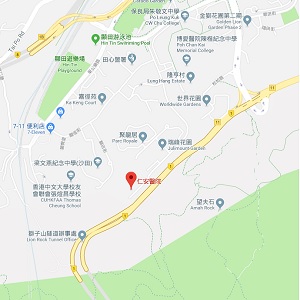Endoscopy
What is an upper endoscopy?
Endoscopy is a procedure used to examine a person's digestive tract. Using an endoscope, a flexible tube with a light and camera attached to it, the doctor can view pictures of a patient’s digestive tract on a TV monitor. During an upper endoscopy, an endoscope is passed through the mouth and throat and into the esophagus, allowing the doctor to view the esophagus, stomach, and upper part of the small intestine. The doctor may remove part of the issues (biopsy) or polyps found, if necessary.
Why do I need to check?
- Anaemia or vomiting of blood
- Stomach pain
- Gstroesophageal reflux disease (GERD)
- Swallowing difficulty
- Abdominal pain with unidentified causes
- Presence of polyps or tumors
- Screening uses
Possible complications of upper endoscopy?
During the procedure, the patient may feel mild discomfort such as nausea and bloating etc.
Major potential complications of an upper endoscopy include the followings:
- Reaction to sedation (e.g. temporary swallowing difficulty)
- Perforation (tear in the gut wall)
- Bleeding
- Infection
The risk of developing complications increases with the complexity of the actual treatment performed. For procedures in which biopsy, removal of polyps and insertion of stents are carried out, the risk of complications increases. The patient should consult his/her doctor for details on the treatment and related complications.
Pre-examination patient instructions
The doctor shall explain the procedure, why it is done and potential complications to the patient in details. The patient will be asked to sign a consent form. He/she should start fasting at least 6 hours before the procedure.
Before the procedure, the patient will be asked to change into a surgical gown and remove all accessories, dentures and contact lens etc.
Inspection process
The patient will be asked to lie on his/her left side and given a sedative. The doctor will then insert an endoscope in the patient’s mouth. It is normal for the patient to feel some pressure in the throat or bloating. The procedure takes around 30 minutes. The patient should consult his/her doctor for details on sedation.
Patient information after the procedure
After the procedure, the patient will be brought to a recovery area. He/she should stay there for a few hours before the sedative wears off. Our healthcare staff will closely monitor the condition of the patient. For the sake of safety, it is mandatory necessary that one gets accompanied when he/she returns home from the clinic/ Hospital. If there is no companion, recovery bed has to be arranged for you after the procedure.
- The patient can resume eating one hour after the procedure.
- As doctor will pump air into the stomach to enhance visualization, patient may feel mild gastric distension, stomach ach. Mild throat discomfort is also common.
- The patient should seek medical help immediately if he/she experiences serious pain in the stomach.




 Union Hospital Polyclinics
Union Hospital Polyclinics


